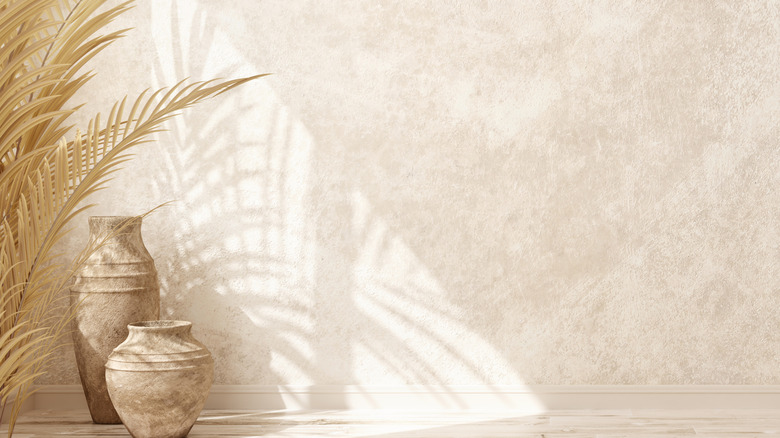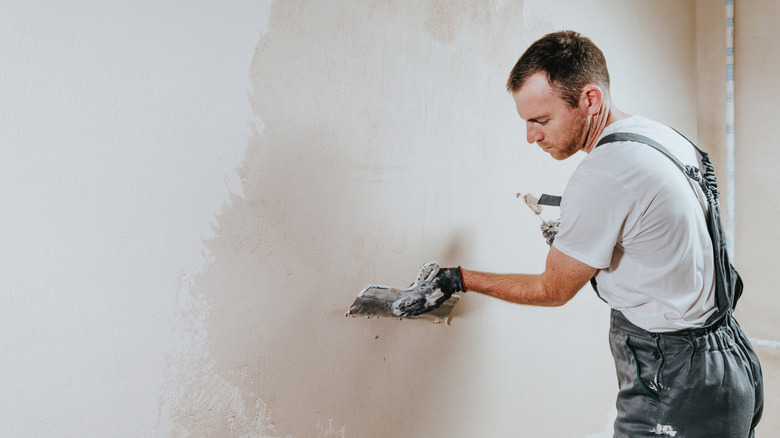No More Flat Paint — This Is The Wall Treatment Trend That's Taking Over In 2026
If you're looking to refresh your space, it's not too hard to slap a couple coats of paint on your walls and call it a day. But if you're seeking something a little different, more unique, with a pop of je ne sais quoi, you might try introducing some texture. No, we're not talking about popcorn finishes — shudder. If you are thinking about removing your popcorn ceiling, here's what it'll cost you. For a fresh new look on your walls, consider using a plaster finish instead of flat paint — it's bang on trend, according to those in the business.
So, what is plaster? Generally, it's a building material used solely for decoration, but it's more often found underneath the paint finish. Plaster usually consists of a combination of cement, sand, lime, and water, and is applied with a putty knife to smooth out surfaces, or used to construct mouldings and other decorative elements. The attractive thing about a plaster finish is that it can be as textured as you want it to be; you can achieve everything from a mottled, moody surface to one covered in sharply defined ridges or even a uniform fluted texture. You can even head to the kitchen and cover up an outdated backsplash with plaster.
How to create a plaster finish on your walls
First, you'll need to decide which type of plaster you should be using on your walls. There are three common varieties: Ornamental plaster, for sculpting intricate decorate elements; a three-coat plaster, which is commonly used instead of drywall; and veneer plaster, which is applied thinly over drywall. There are also limewash, Venetian plaster, and Roman clay, for applying a subtlely textured finish to your walls. You're looking to create a more natural look, rather than a highly polished smooth result.
Whichever type of plaster finish you've decided to use, preparing your walls for plaster is much like preparing to paint. Tape off your baseboards and trim and make sure the wall is clean. Then, prepare your plaster mixture according to the manufacturer's instructions.
Once you've got your plaster mixed, go ahead and use some to smooth out any holes in the wall. If you need to practice your plastering technique, consider purchasing a single sheet of drywall to try out different tools and techniques on. Experts recommend using a flat trowel tool for application, but you could also try out something a little funkier, like using a floral stencil to create a flowery plaster appliqué. Plaster will begin drying about 30 minutes after application, so make sure you're working efficiently. Looking for more plaster inspiration? Check out the unique wall plaster HGTV's Joanna Gaines absolutely loves.

